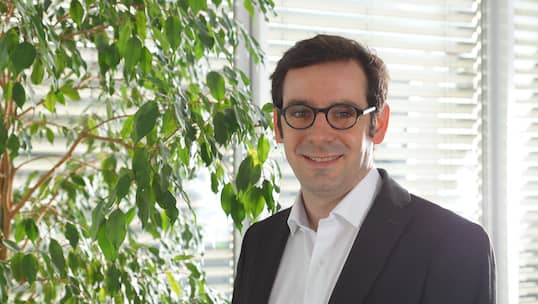28.06
2021
Interview with Prof. Michel Prudent, Head of Research and Development Products at Transfusion Interrégionale CRS
Interview with Prof. Michel Prudent, Head of Research and Development Products at Transfusion Interrégionale CRS
Can you describe the journey of the blood from donor to patient?
I like to call this ‘an unexpected journey’. In a few words, the blood is composed of red blood cells (which deliver oxygen and carry antigens – the famous blood groups), white blood cells, plasma and platelets (which contribute to blood coagulation alongside plasma).
There are two ways of collecting blood from donors. The first is whole blood donation; the second is donation by apheresis, where only the targeted cells are harvested. In the first case, the blood is collected in kits containing several bags. Then, using centrifugation and filtration, it is separated into red blood cells (which can be stored for 42 or 49 days at 4°C), platelets (which can be stored for seven days at 22°C) and plasma (which can be frozen at –30° for up to two years). When a patient needs blood, she/he will receive one or several of these components, depending on the disease or condition they’re suffering from.
Which kinds of patients can benefit from these donations?
The different uses of blood transfusion are varied. Patients in traumatology will receive red blood cells, plasma and platelets. But most transfusions are for patients suffering from anaemia and other blood disorders such as the sickle cell diseases (where red blood cells are transfused) or for patients in haemato-oncology (who regularly receive red blood cells and platelets).
What is your research about?
Our research at the Interregional Blood Transfusion SRC and particularly at Biopôle is dedicated to the study of blood cells (mainly red blood cells and platelets) in the context of transfusion medicine. Using biochemistry and biology, we look at what happens to cells from the point where they leave the donor’s body to the point where they are transfused into a patient and how this journey affects the cells.
We’ve been working for a long time on the
ex vivo ageing of red blood cells and identified different phases during a six-week period of storage at 4°C. This ageing is influenced by the donor and not only by what is done to the blood after collection.
Platelets are also fascinating and we’ve been looking at the impact of cell preparation. We are currently developing methods to study platelets after transfusion to see whether there are correlations between the cell lesions observed in the bags and transfusion outcomes.
How does your research aim at improving transfusion medicine?
Our research and development seeks to improve the blood supply chain, the quality and safety of labile blood products, and transfusion efficiency – one way to directly apply the research on ageing we mentioned before. On the research side, our aim is not only to understand the impact of the transfusion chain at the molecular and cellular levels and to develop tools but also to communicate with physicians and blood bankers about potential lesions and their clinical impact. On the development side, we’re focusing on technical improvements to blood processing (instrument parameters, for instance) and new and innovative solutions (such as new ways of storing blood cells), quality controls and validation as part of good manufacturing practices.
W
hat innovation would you like to see in your field? What is currently missing?
In my opinion, there are two main areas related to blood components:
- First, we need to look more closely at the triptych of donors, products and patients. Research suggests that one product (function of donor and/or processing) might be more suitable for one condition (patient needs)than others due to each product’s characteristics. Meanwhile, blood could be processed and stored in different ways depending on the donor’s characteristics. Taking these three factors into account could improve transfusion medicine. Of course, logistics remains the key element to actually make this happen.
- The second area is the production of synthetic red blood cells or platelets in a laboratory. These approaches would be a total game changer and several research groups have been working on the feasibility of it. However, this is not going to happen overnight and we still absolutely need donors – they’re the only ones making transfusion medicine possible today. So don’t hesitate to come and see us to give blood.
Biography
Prof Michel Prudent is the head of the R&D Products (since 2017) and the blood products research laboratory (since 2013) at Interregional Blood Transfusion in Lausanne. He also leads the advanced cellular and biological therapies at the CRISP, CHUV. Chemical engineer from background, he obtained is PhD in 2009 at the Ecole Polytechnique Fédérale de Lausanne. He was nominated as Privat-Docent (April 2017) and Associate Professor (March 2021) at the University of Lausanne. With his team, they have been working on the biochemistry, biology and processing of blood products.
